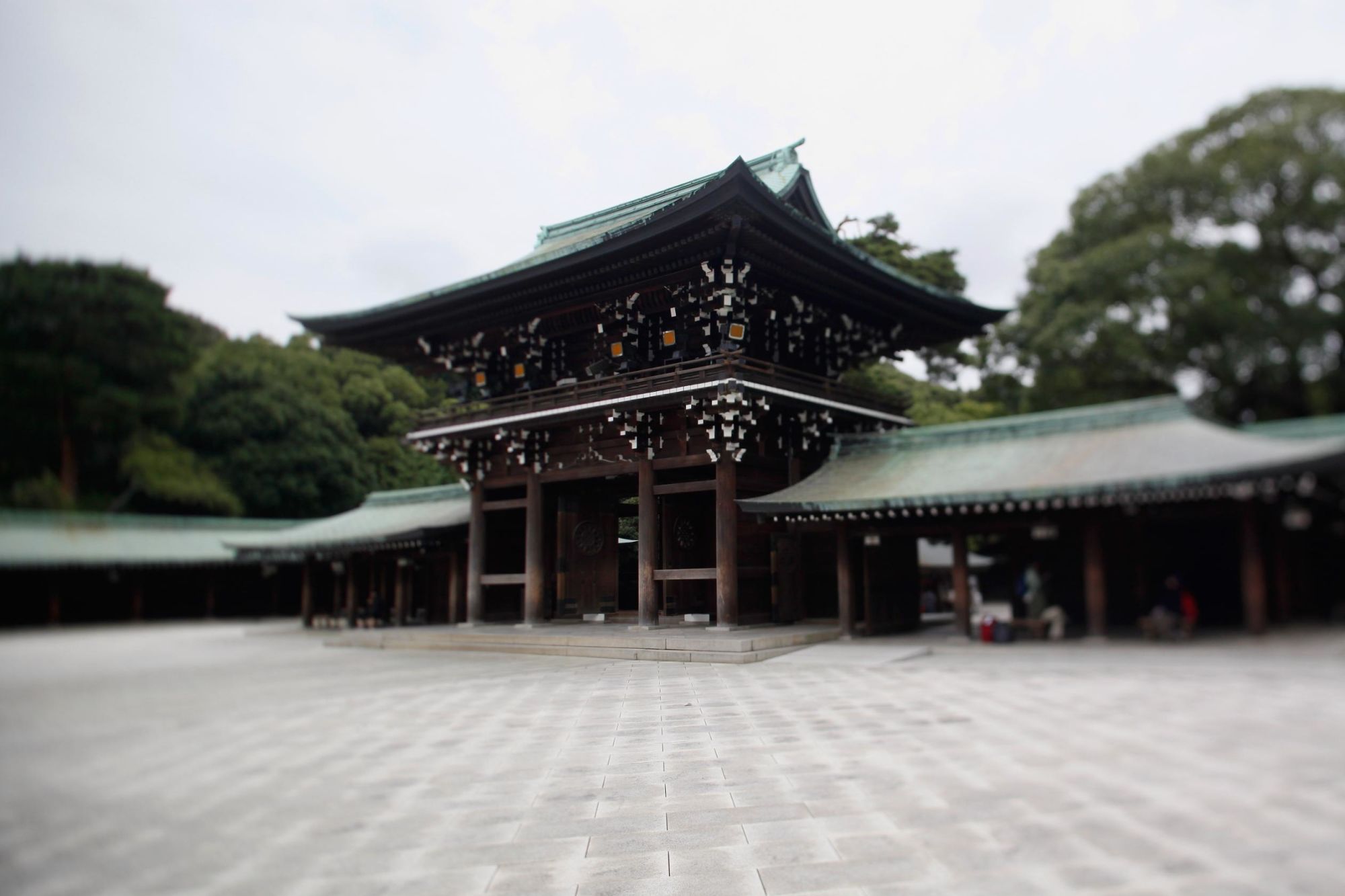At Tokyo’s Meiji Shrine, it’s not unusual for visitors to catch a glimpse of a traditional wedding, the couple led in procession by Shinto priests under a large red umbrella. Located within the tranquil Yoyogi Park, the famed shrine has long been a popular wedding spot, with about a dozen daily ceremonies conducted there over the year’s busiest weekends.
This Monday, four couples are expected to wed at the historic site. But there is one, in particular, that Japan will be watching: Princess Ayako’s marriage to 32-year-old shipping worker Kei Moriya.
And while the hotly anticipated ceremony isn’t technically a royal wedding (the princess is forfeiting her status to marry a “commoner”), the venue is nonetheless of huge symbolic importance to the world’s oldest monarchy.
Opened in 1920, the shrine is dedicated to the deified souls of Ayako’s great-great grandfather Emperor Meiji and his wife, Empress Shoken, who died in 1912 and 1914 respectively. It is largely constructed from cypress and copper, and serves to commemorate Meiji’s role as a modernizer who opened Japan to the West in the second half of the 19th century.
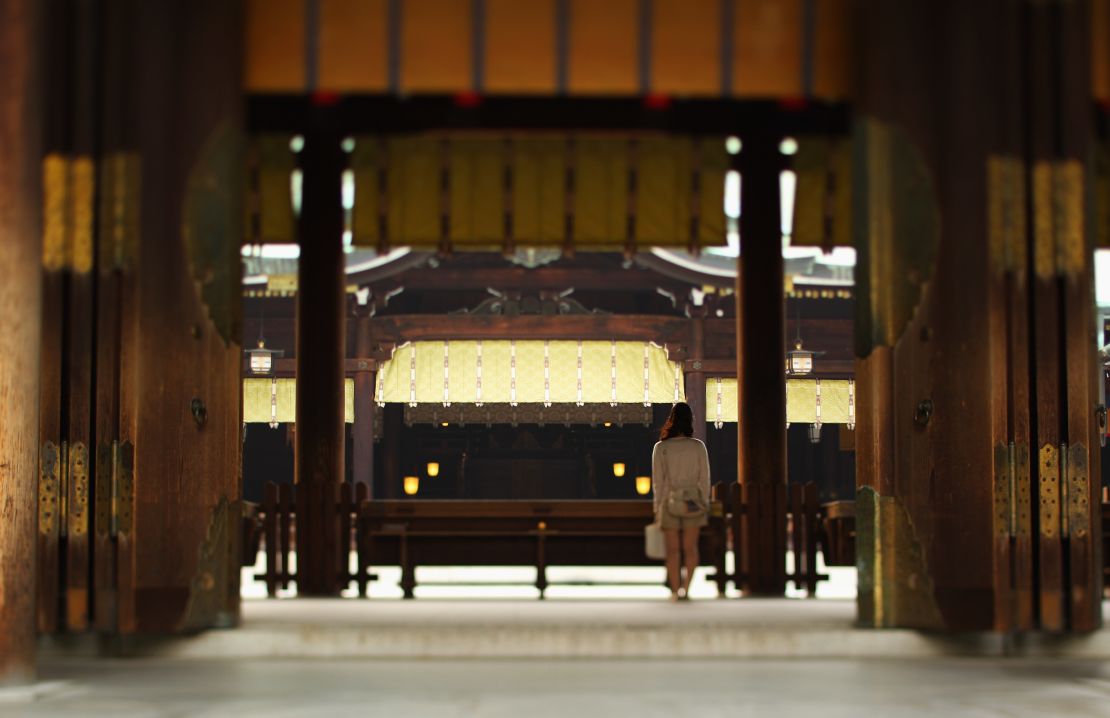
Such was the country’s reverence for its former emperor that, as the memorial was being built, people from around Japan donated approximately 100,000 trees. Many of them stand in Yoyogi Park to this day.
The shrine itself, like many others around Japan, was built in an architectural style known as nagare-zukuri – a tradition characterized by asymmetric gabled roofs with undulated front slopes that sweep up into pointed corners. Entrances to the complex are covered by huge wooden gates, known as tori, crowned with distinct curved beams.
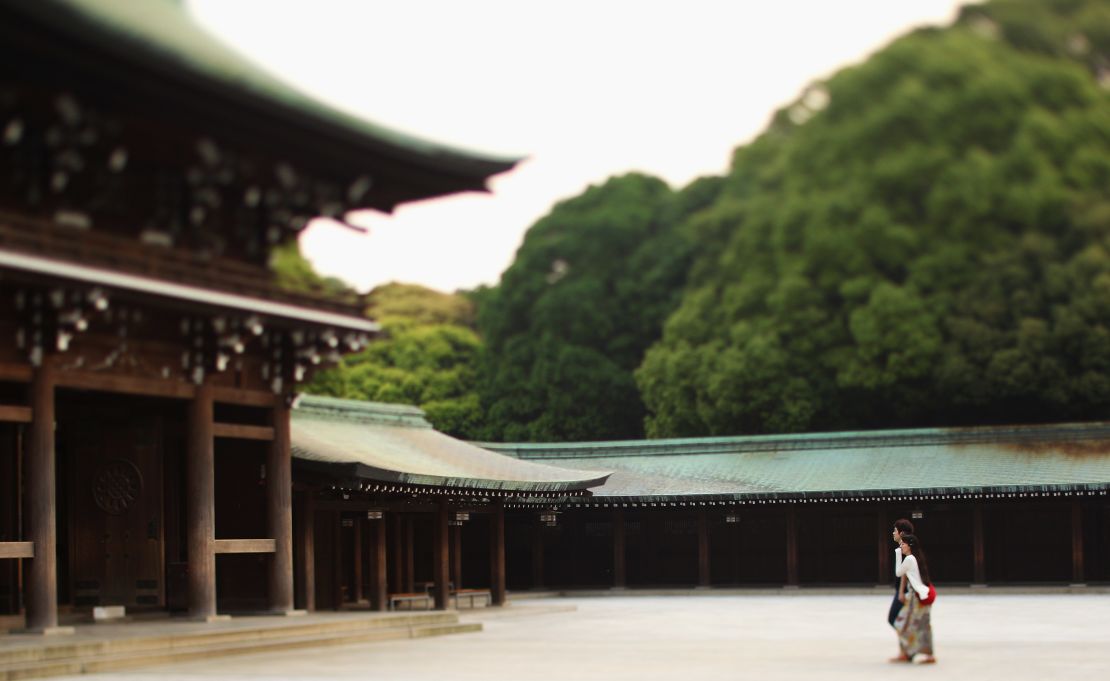
These gates mark the boundary between the sacred and the everyday. But the a shrine’s layout is somewhat more complicated that this divide might suggest, according to Aike Rots, an associate professor of Japan studies at the University of Oslo.
“At a Shinto shrine, there’s not a sharp distinction between the profane space and the sacred space,” he added in a phone interview, “Rather, it’s a concentric thing. At the center (of the complex) you have the most important place, which is where the sacred object – the embodiment of the deity, such as a mirror, a statue or a sword – is kept. This main hall, called the honden, is somewhere only shrine priests can enter on ritual occasions.
“In front of that, you have a worship hall, which is called a haiden. That’s a place you’ll only go inside if you’ve undergone ritual purification.
“But if you’re just visiting, or go to offer a prayer, then you don’t even go inside the haiden – you stand in front of it. So, as you get further away from the center, it gets somewhat less sacred.”
Radical simplicity
The 175-acre complex houses a variety of other functional and symbolic structures, including a ritual cleansing station and a sacred kitchen used to prepare food offerings. A so-called Treasure Museum (currently closed for refurbishment) displays some of the former emperor’s earthly possessions, while an adjacent site hosts 80 murals depicting scenes from his life.
The buildings are notable for their clean lines and architectural simplicity. But although this is an aesthetic now commonly associated with traditional Japanese architecture, the Meiji Shrine was considered groundbreaking at the time. It marked a new direction for design in a period when Shintoism was being popularized – and politicized – by Japan’s imperial government.
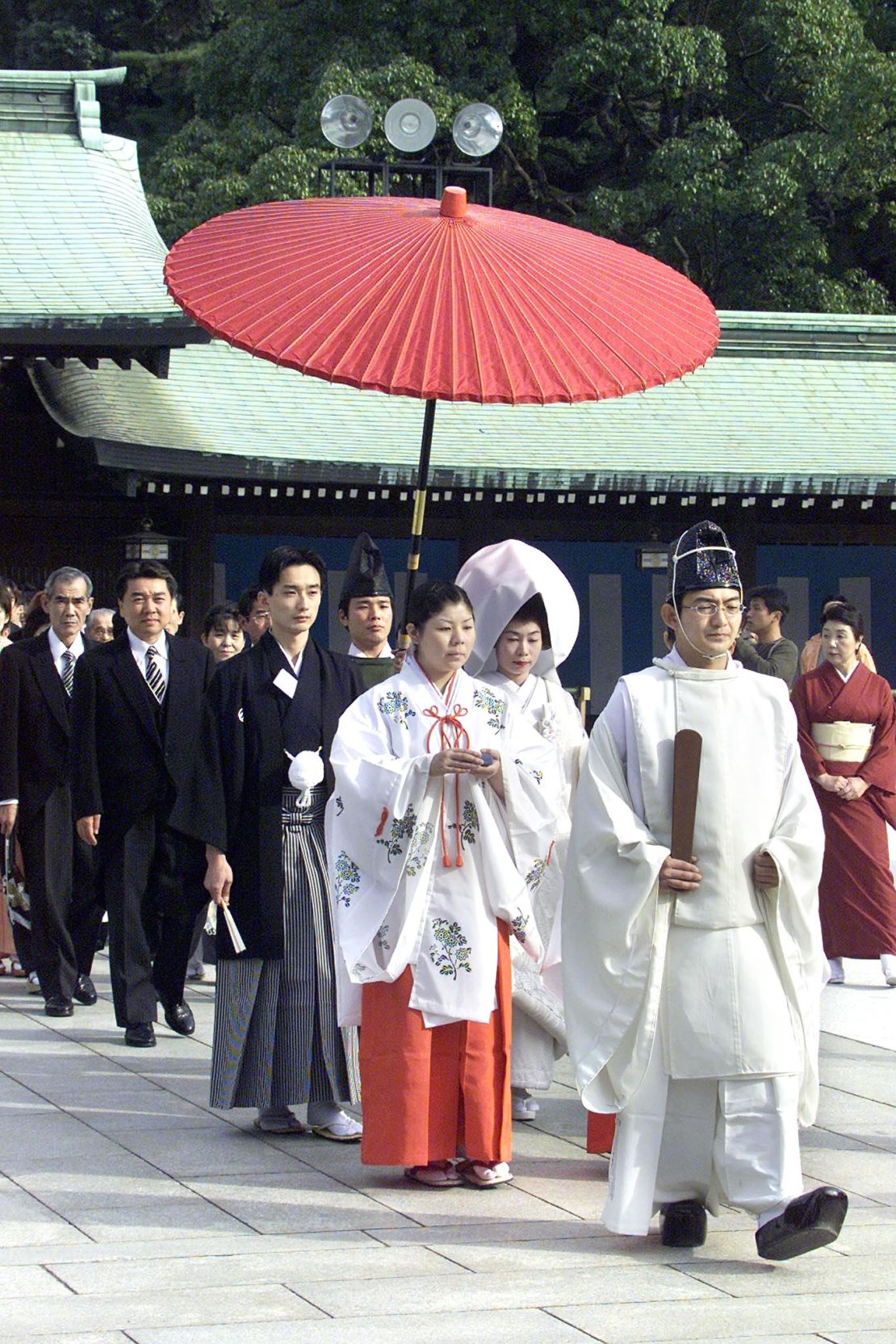
“When you look at 17th- and 18th-century shrines, there are these very elaborate carvings and they’re very colorful,” Rots said. “It was not always easy to tell the difference between Shinto shrines and Buddhist temples.
“But in the Meiji period, as Shintoism was invented – or created – as the national indigenous tradition, as opposed to Buddhism … the dominant architectural anesthetics changed. All of a sudden, this wooden, unpainted, no-carvings simplicity became the new paradigm – the new ideal.
“It became a model for other shrines in the country,” he added.
For its relative modernity, the Meiji Shrine is nonetheless steeped in ritual. Visitors, of which there are more than 10 million every year, are asked to pay their respects by bowing at a torii before passing through. Upon reaching the main shrine buildings, guests should bow twice, clap twice and then bow once more.
A ‘people’s shrine’
Such rituals only hint at the intricate customs of Shinto weddings that can be traced back to the Muromachi period (1336-1573).
Ayako is expected to arrive at the site in the morning, after which she will pass through the eastern torii with her groom. She will then change into formal attire, before a solemn procession – traditionally fronted by priests and “shrine maidens” – leads the couple and guests into the wedding hall.
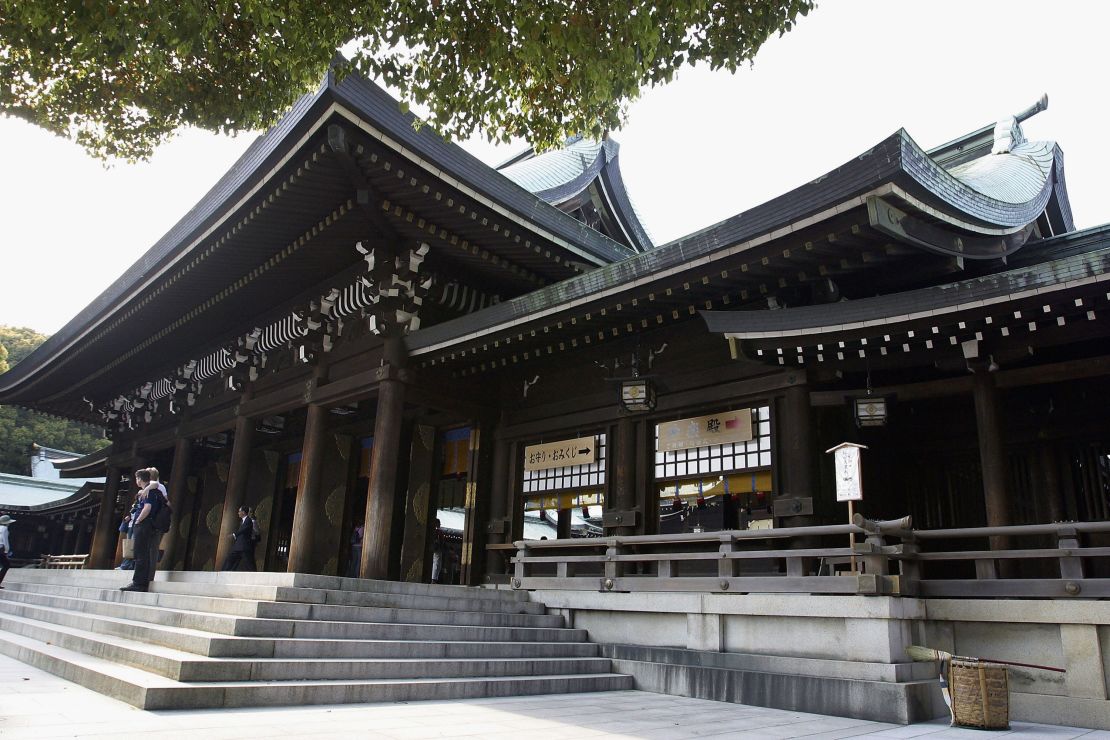
The ceremony itself will take around 30 minutes. It will include prayers and rituals, such as ringing a bell to summon the mercy of Emperor Meiji and Empress Shoken, and exchanging sips of sake. Like many modern Japanese couples, the pair is also expected to exchange rings, a custom inherited from Western nuptials.
Princess Ayako’s wedding will take place in a music and dance hall just beside the central honden. According to shrine officials, this will be the first time a wedding is conducted here. The seemingly humble wooden structure hides two subterranean floors, and can host hundreds of guests, though fewer than 40 are expected to witness Monday’s ceremony.
This is not unusual – Shinto weddings are traditionally small-scale affairs. The two intimate, wood-laden ceremony rooms advertised on the shrine’s wedding planning website can host 46 and 58 guests respectively (although listed reception venues can seat over 400 for dinner). These rooms feature long red carpets that stretch along the center of the room, as well as ceremonial objects like shimenawa, a sacred Shinto rope.
Unlike venues used for high-profile royal weddings around the world – such as London’s Westminster Abbey or Stockholm’s Royal Palace – the Meiji Shrine is available for the general public to hire. This seems fitting, given that, during construction, the Japanese people donated not only trees but their labor.
“Both the shrine and the forest involved over 100,000 volunteers who participated in planting trees, building and so on,” Rots said. “So it’s been designed, very much from the beginning, as a people’s shrine.”
